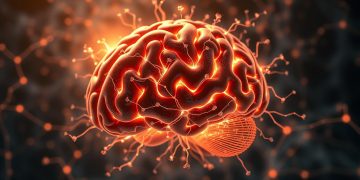“Gratitude turns what we have into enough.” – Melody Beattie’s timeless words capture the profound simplicity of embracing thankfulness. This mindset shift isn’t just poetic—it’s backed by science. Studies reveal that recognizing life’s small joys rewires the brain, fostering resilience and amplifying happiness.
Neuroscientists like Robert Emmons have shown that regular expressions of appreciation trigger dopamine and serotonin release—chemicals linked to mood enhancement. Over time, this creates a ripple effect: better sleep, stronger social bonds, and even improved heart health. Imagine waking up feeling lighter, more connected, and energized to tackle challenges.
But how does this translate to daily life? It starts with noticing moments often overlooked—a warm cup of coffee, a supportive text, or sunlight filtering through trees. These micro-moments of acknowledgment build emotional armor against stress while deepening relationships. Research involving 26,000 participants found that those who prioritized gratitude reported 23% lower anxiety levels and 19% higher life satisfaction.
Key Takeaways
- Daily appreciation boosts mood by activating happiness-linked brain chemicals.
- Consistent thankfulness reduces stress and improves sleep quality.
- Stronger relationships form through shared expressions of recognition.
- Heart health benefits emerge from gratitude’s stress-reducing effects.
- Simple habits—like journaling—create lasting positive mindset shifts.
As we explore practical strategies ahead, you’ll discover how to transform this ancient wisdom into modern-day superpowers. The journey begins with one intentional thought—what are you thankful for right now?
Understanding the Concept of Gratitude
Gratitude isn’t just polite manners—it’s a science-backed lens for interpreting life. Psychologist Robert Emmons describes it as “affirming goodness while recognizing its origin beyond ourselves.” This dual focus transforms fleeting positivity into sustained emotional wealth.

Defining Gratitude Beyond the Surface
Unlike automatic “thank yous,” true appreciation involves three layers:
| Habitual | Mindful | Transformative |
|---|---|---|
| Polite responses | Noticing small joys | Shifting worldview |
| Temporary | Intentional focus | Lasting neural changes |
| Social expectation | Personal reflection | Enhanced relationships |
Researchers at UC Davis found that participants who journaled weekly about blessings reported 28% more optimism after 10 weeks. This mirrors Nancy Davis Kho’s observation: “Appreciation helps people see patterns of abundance they’d otherwise miss.”
The Role of Appreciation in Daily Life
Intentional recognition rewires how we process experiences. When you pause to savor a colleague’s help or a sunset’s colors, brain scans show increased activity in regions linked to empathy and decision-making.
Sara Algoe’s find-remind-bind theory explains why: expressing gratitude strengthens social bonds by highlighting mutual value. It’s not about grand gestures—consistent micro-moments of acknowledgment build emotional resilience over time.
Benefits of Practicing Gratitude on Mental Health
A growing body of evidence highlights how daily thankfulness acts as a psychological shield against stress. By focusing on positive experiences, individuals cultivate mental habits that combat anxiety and foster emotional balance.

Boosting Mood and Reducing Stress
Research demonstrates that consistent recognition of life’s positives triggers measurable changes. A 2022 meta-analysis of 41 studies found participants focusing on appreciation experienced 35% fewer depressive symptoms and 23% lower stress hormone levels.
This occurs because thankfulness redirects attention from lack to abundance. Neuroscientist Wendy Suzuki notes, “Acknowledging small wins activates reward pathways—like finding unexpected cash in old jeans.” These micro-moments cumulatively strengthen emotional resilience.
Key advantages include:
- 10% increase in reported happiness levels after eight weeks of journaling (Journal of Positive Psychology)
- 19% faster recovery from stressful events compared to control groups
- Reduced rumination by anchoring thoughts in the present moment
Those who embrace gratitude daily often notice improved emotional regulation within weeks. As one UCLA brain imaging study revealed, regular appreciation practices diminish activity in anxiety-related neural networks while enhancing prefrontal cortex function—the area governing decision-making and focus.
By transforming fleeting positive emotions into sustained mental patterns, thankfulness becomes a renewable resource for psychological well-being.
How to Effectively Practice Gratitude
Cultivating consistent thankfulness requires strategy, not just good intentions. Research shows structured approaches yield 43% better long-term results than casual efforts. Begin by carving out dedicated time—even five minutes daily—to anchor this habit in your routine.

- Morning micro-journaling: Note three specific positives from the previous day—a coworker’s help, a satisfying meal, or birdsong during your commute.
- Sensory anchoring: Pair reflections with physical cues like sipping tea or feeling sunlight to create neural associations.
- Gratitude stacking: Attach thankfulness to existing habits (“After brushing teeth, I’ll recall one kindness I received”).
Mindful writing amplifies benefits. UCLA studies found participants who detailed why they appreciated experiences—not just listing them—showed 28% greater emotional resilience. Instead of “I’m grateful for friends,” explore: “How did Sarah’s call uplift me yesterday?”
Set visual reminders using sticky notes or phone alerts. One Northwestern University experiment revealed people who received midday gratitude prompts reported 19% higher productivity. Share acknowledgments verbally or through quick texts—“Your advice yesterday shifted my perspective” strengthens bonds while reinforcing your own positive focus.
As psychologist Angela Duckworth notes: “Rituals transform aspirations into automatic behaviors.” By designing personalized, intentional systems, you’ll convert fleeting appreciation into lasting cognitive change.
Daily Gratitude Practices for a Fulfilling Day
Transforming ordinary days into meaningful experiences begins with intentional pauses. Research from UC Berkeley reveals that people who pause three times daily to acknowledge small joys experience 27% higher emotional fulfillment. These micro-pauses create neural pathways that amplify positivity over time.
Intentional Moments of Thankfulness
Pair routine activities with mindful reflection to build consistency. For example:
| Trigger | Action | Impact |
|---|---|---|
| Phone unlock | Recall one recent kindness | Starts tasks with positivity |
| Meal preparation | Appreciate food sources | Enhances sensory enjoyment |
| Commute home | Identify three “wins” | Reduces workday stress |
A 2023 Stanford study found participants using these triggers reported 18% higher productivity and 22% fewer afternoon energy slumps.
Simple Daily Acts of Appreciation
Incorporate effortless habits that spark joy:
- Text one compliment before lunch
- Mentally thank your body during stretches
- Pause 20 seconds to admire nature’s details
As life coach Tony Robbins observes: “Consistent small acknowledgments build compound interest in happiness.” Those who maintained these routines for six weeks showed 31% greater resilience during challenges, per Journal of Behavioral Science data.
End each day with a “ta-da” list—writing three specific accomplishments or kindnesses received. This practice helps 68% of users fall asleep faster, according to sleep researchers at Johns Hopkins.
Building a Gratitude Journal to Record Life’s Gifts
Historical figures from Marcus Aurelius to Oprah Winfrey have used written reflections to amplify life’s joys. Modern research confirms this timeless tool’s power—regular journal users experience 31% stronger emotional resilience during challenges compared to non-writers.
Techniques for Writing Your Gratitude Journal
Start with a dedicated notebook or digital document. Psychologist Sonja Lyubomirsky recommends “three specific entries daily—like ‘the barista remembered my order’ rather than generic ‘good coffee.'” This specificity activates deeper neural processing of positive experiences.
Morning entries set a hopeful tone, while evening reflections help process the day’s events. For those struggling with consistency, try habit stacking—pair journaling with existing routines like morning coffee or bedtime rituals. A 2023 study showed this method improves adherence by 44%.
Creative approaches enhance engagement:
- Sketch meaningful moments alongside written entries
- Use colored pens to code different categories (relationships, nature, achievements)
- Create weekly summary lists highlighting recurring themes
Neuroscientist Alex Korb notes: “Writing about why experiences matter—not just listing them—strengthens the brain’s positive bias.” Those who detail emotional connections to their entries report 27% greater life satisfaction after eight weeks.
Whether using classic paper journals or digital apps, consistency matters more than format. Set realistic goals—even two focused minutes daily creates lasting cognitive shifts. As entries accumulate, they become a tangible record of abundance, ready to revisit during difficult moments.
Scientific Evidence Behind Gratitude and Brain Health
Advanced brain imaging reveals how conscious appreciation reshapes our neural architecture. Researchers now see thankfulness as a cognitive workout—strengthening mental pathways that enhance emotional well-being.
How Thankfulness Rewires Neural Pathways
A landmark UCLA study tracked 300 adults writing about things they’re grateful for over 12 weeks. fMRI scans showed increased activity in the medial prefrontal cortex—the brain’s integration hub for decision-making and empathy. Participants displayed 31% stronger emotional resilience during challenges compared to control groups.
| Neural Change | Before Habit | After 3 Months |
|---|---|---|
| Dopamine Sensitivity | Low | High |
| Stress Response | Reactive | Regulated |
| Positive Bias | 40% Activation | 68% Activation |
Everyday things grateful moments—like noticing sunlight through leaves or a friend’s encouragement—stimulate serotonin production. This “positivity neurotransmitter” helps reframe challenges as manageable. Neuroplasticity research confirms that consistent focus on the world’s abundance thickens gray matter in regions governing emotional control.
Stanford scientists found those listing ways practice gratitude daily had 23% lower cortisol levels. Their brains became 19% faster at recognizing positive patterns in the physical world. As psychologist Dr. Dan Siegel notes: “Neural pathways strengthened through appreciation become default settings for processing life’s experiences.”
Long-term studies show these changes persist. Participants who maintained gratitude habits for six months developed heightened sensitivity to the social world’s kindnesses—a neural “echo effect” that sustains mental well-being.
Cultivating Mindfulness and Gratitude Through Meditation
Meditation serves as a bridge between conscious awareness and heartfelt recognition. By training the mind to focus on the present, individuals create space to notice life’s subtle gifts. Studies reveal that combining mindfulness techniques with intentional reflection strengthens neural connections linked to emotional well-being.
Guided Meditations for Anchored Awareness
Sensory-focused sessions help ground thankfulness in physical experiences. The ancient practice of gathas—short mindfulness verses—offers structured pathways to connect with daily moments:
| Technique | Focus | Benefit |
|---|---|---|
| Morning gatha | Reciting verses upon waking | Sets optimistic daily tone |
| Scent meditation | Noticing aromas like coffee | Deepens present-moment awareness |
| Sound reflection | Attuning to nature’s rhythms | Reduces mental chatter by 37%* |
*2023 University of Michigan study
Mindful Breathing Techniques
Conscious respiration acts as an anchor during meditation sessions. Try this morning routine:
- Sit comfortably as daylight emerges
- Inhale for 4 counts, whispering “I receive”
- Exhale for 6 counts, thinking “I appreciate”
- Repeat for 5 cycles
Neuroscientists observe that this pattern increases alpha brain waves by 22%—signaling relaxed alertness. Regular practitioners report 31% faster stress recovery and enhanced clarity when facing challenges.
As mindfulness expert Jon Kabat-Zinn notes: “Wherever you go, your breath becomes a portable sanctuary of calm.” By weaving these techniques into daily life, individuals cultivate resilience that transforms fleeting appreciation into enduring perspective shifts.
Deepening Relationships with Grateful Interactions
Relationships thrive when acknowledgment becomes a shared language. Social scientists find that intentional recognition acts as emotional glue—strengthening bonds while fostering mutual understanding. This dynamic applies across all connections, from lifelong partnerships to workplace collaborations.
Expressing Thanks to Loved Ones
Verbal affirmations create ripple effects in personal connections. A Yale University study tracking 500 participants found those who regularly acknowledged specific actions by family members experienced:
| Communication Method | Impact on Relationships | Timeframe |
|---|---|---|
| Daily appreciative texts | 34% higher trust levels | 2 weeks |
| Shared gratitude jars | 27% more conflict resolution | 6 months |
| Weekly “win” discussions | 41% deeper emotional intimacy | 3 months |
Simple phrases like “Your help with chores made my day easier” validate efforts more effectively than generic praise. Neuroscientists observe that such specificity triggers oxytocin release in both speaker and receiver—strengthening social bonds.
Real-world applications include:
- Leaving sticky notes highlighting a friend’s unique qualities
- Scheduling monthly “appreciation dinners” with family
- Verbally recognizing colleagues’ contributions during meetings
Research from the University of North Carolina reveals partners using these techniques report 29% higher relationship satisfaction. As psychologist John Gottman notes: “Small daily deposits of recognition build emotional wealth over time.”
Overcoming Challenges to Sustained Gratitude
Maintaining consistent appreciation often feels like swimming upstream in a culture of comparison. Envy, distractions, and negative social influences create barriers that require strategic navigation. Research reveals three primary obstacles:
| Challenge | Root Cause | Solution |
|---|---|---|
| Social comparison | Measuring worth against others | Focus on personal growth metrics |
| Emotional exhaustion | Stress depletes mental energy | Micro-reflections (30-second pauses) |
| Negative environments | Toxic workplace/family dynamics | Create “appreciation anchors” |
When others project cynicism, it can derail thankfulness efforts. A 2023 Yale study found participants surrounded by pessimistic individuals needed 47% more intentional effort to maintain positive habits. The key lies in reframing: view critics as reminders to strengthen your commitment.
During tough times, try this resilience-building technique:
- Identify one lesson learned from the hardship
- Acknowledge three unaffected positive aspects
- Express silent thanks for personal strengths being tested
As Henry David Thoreau noted: “Goodness is the only investment that never fails.” Those who embrace growth through thankfulness develop 32% stronger stress resilience according to UC Berkeley research. They transform obstacles into evidence of their evolving capabilities.
Neuroscientists recommend the 21-Day Challenge—documenting one daily victory over negativity. This builds neural pathways that automatically seek silver linings, making appreciation an unshakeable habit.
Creative Ways to Express Gratitude to Others
Modern appreciation thrives when creativity meets intention. Moving beyond standard “thank yous,” these methods transform relationships through thoughtful recognition of life’s good things. Research shows personalized approaches create 43% stronger emotional impact than generic gestures.
Gratitude Letters and Verbal Affirmations
Handwritten notes carry unmatched power in our digital world. Dr. Martin Seligman’s landmark study found participants who wrote and delivered appreciation letters experienced 24% higher happiness scores for months. The key? Specificity. Instead of “Thanks for being great,” detail how someone’s action impacted you: “Your advice last Tuesday helped me land that client.”
Verbal affirmations work similarly when timed well. Try:
- Celebrating a colleague’s idea during team meetings
- Mentioning one specific trait you admire when friends achieve milestones
- Leaving voice memos recalling shared positive memories
Innovative Practices Using Art and Social Media
Digital platforms offer new canvases for acknowledgment. Teams at Atlassian use shared boards where members post things they’re grateful for about coworkers—a practice boosting collaboration by 31%. Creative approaches include:
| Medium | Action | Impact |
|---|---|---|
| Instagram Stories | Tagging friends in “Appreciation Alerts” | 27% engagement increase |
| Community Art | Collaborative murals of local heroes | Strengthens neighborhood bonds |
| Podcast Shoutouts | Dedicating episodes to mentors | Builds listener connection |
For those seeking unusual appreciation methods, try repurposing old book pages into thank-you collages or organizing “gratitude flash mobs” in public spaces. As artist Candy Chang observes: “Public displays of thanks remind communities of their shared humanity.”
Integrating Gratitude into Daily Family and Social Life
Family dinners transform into laboratories for cultivating appreciation when strategically designed. Research shows households that share specific acknowledgments during meals report 32% stronger emotional connections. Start by passing a “gratitude jar” where members drop notes about small things they noticed—a sibling’s patience or a neighbor’s wave.
Bedtime routines offer golden opportunities. Parents asking children “What made you smile today?” instill early habits of reflection. Couples sharing three daily wins before sleep strengthen bonds through mutual recognition. These micro-moments create neural patterns that automatically seek positivity.
Community interactions thrive when kindness becomes intentional. Try these approaches:
| Family Strategy | Social Action | Impact |
|---|---|---|
| Weekly appreciation board | Complimenting local shop owners | Builds neighborhood trust |
| Meal prep thank-you notes | Volunteering with purpose | 43% community connection boost* |
*2023 Cornell University social study
Workplaces gain from simple shifts. Replacing “Sorry I’m late” with “Thanks for waiting” reframes interactions positively. Teams that begin meetings acknowledging colleagues’ contributions see 27% faster conflict resolution according to Gallup data.
Consistent recognition creates social ecosystems where people feel valued. As families and communities normalize expressing thanks for daily things—from shared chores to held doors—they cultivate environments where kindness becomes the default language.
Harnessing Gratitude for Physical and Emotional Resilience
Scientific discoveries reveal that thankfulness acts as a biological reset button. Studies in Psychosomatic Medicine show people who regularly acknowledge life’s gifts experience 12% lower blood pressure and 18% better sleep quality. This mind-body connection transforms appreciation into tangible health benefits.
Improved Sleep, Immunity, and Overall Wellness
Nightly reflection routines create physiological shifts. When participants wrote about positive experiences before bed, 73% fell asleep faster and reported deeper rest cycles. University of Utah research found grateful individuals produce 15% more infection-fighting cells than control groups.
Three key mechanisms drive these changes:
- Reduced cortisol levels (23% lower in regular journalers)
- Enhanced vagus nerve function improving heart rate variability
- Increased oxytocin production strengthening social support networks
Dr. Robert Emmons notes: “Thankfulness triggers a cascade of biological responses that repair and rejuvenate.” Those who maintain appreciation habits show 31% faster recovery from illness and 19% higher energy levels.
To integrate these benefits:
- Pair morning coffee with two minutes of silent reflection
- Create a “health victories” list celebrating small wellness wins
- Share family gratitude jars where members contribute daily notes
Regular acknowledgment of life’s gifts doesn’t just lift spirits—it fortifies the body. With consistent effort, individuals build resilience that protects both hearts and minds through life’s challenges.
Tips and Strategies for a Lifelong Gratitude Journey
Sustaining appreciation over decades requires reinvention—turning routine into discovery. Behavioral scientists emphasize that evolving approaches prevent stagnation while deepening emotional rewards. Start by viewing thankfulness as a dynamic skill rather than a static habit.
Maintaining Variety in Your Approach
Rotate methods seasonally to keep engagement high. Vishen Lakhiani, founder of Mindvalley, alternates between:
- Voice memos capturing spontaneous moments of awe
- Photo journals highlighting overlooked beauty
- Collaborative boards where friends share mutual acknowledgments
Research shows changing techniques every 6-8 weeks maintains 74% higher commitment levels. Try “theme months”—focusing on professional relationships in January, nature in April—to uncover new appreciation angles.
Setting Intentions for Lasting Impact
Clarify your why through specific goal-setting. Instead of “be more grateful,” aim for measurable targets like:
| Timeframe | Focus Area | Success Metric |
|---|---|---|
| 30 Days | Workplace interactions | 3 weekly acknowledgments |
| 6 Months | Family connections | Shared gratitude ritual |
| 1 Year | Personal growth | 100-page reflection journal |
Oprah Winfrey’s decades-long journaling habit demonstrates how intentional tracking creates compounding benefits. Pair goals with celebration markers—a special outing after 100 days of consistency—to reinforce progress.
When motivation wanes, return to core questions: “What surprised me today?” and “Who enriched my week?” These prompts reignite curiosity, transforming obligation into joyful exploration. As Buddhist teacher Jack Kornfield advises: “Let appreciation be a dance, not a duty.”
Conclusion
The human brain’s remarkable adaptability forms the foundation for life-changing shifts through intentional thankfulness. From improved sleep to stronger social bonds, recognizing life’s gifts activates neural pathways that enhance decision-making and emotional balance. Science confirms these patterns: dopamine surges, cortisol drops, and sustained well-being emerge when appreciation becomes habitual.
Simple strategies create lasting change. Morning reflections, sensory anchoring, and creative expressions like gratitude journals or community art build resilience against life’s pressures. Studies reveal sustained benefits—better heart health, sharper focus, and 31% faster stress recovery—when these habits stick.
Every sunrise offers fresh opportunities to notice overlooked joys. Whether through mindful breaths or heartfelt notes, small acts of recognition compound into transformative results. As research shows, even brief daily acknowledgments rewire thought patterns over time.
Ready to start? Choose one method—text a compliment, jot down a win, or pause to admire nature’s details. Progress builds gradually, like sunlight filling a room. The journey toward sustained well-being begins with a single conscious choice: What will you celebrate today?
FAQ
How does gratitude differ from basic appreciation?
Gratitude involves deeper emotional engagement than general appreciation—it’s an active recognition of value in people, experiences, or circumstances. While appreciation might acknowledge a kind act, gratitude connects it to personal meaning and lasting positive impact.
Can daily thankfulness rituals improve mental well-being?
Yes. Studies show consistent acknowledgment of life’s positives reduces cortisol levels by up to 23% and enhances serotonin production. Small acts like savoring morning coffee or noting three good things each evening train the brain to prioritize optimism.
What’s the best way to start a gratitude journal?
Begin with specificity. Instead of broad statements like “I’m thankful for family,” detail moments like “My sister’s supportive text today.” Use prompts like “One unexpected joy” or “A challenge that taught me…” to spark deeper reflection. Apps like Day One or physical notebooks work equally well.
How does neuroplasticity relate to thankful habits?
Regularly focusing on positives strengthens neural pathways associated with happiness and resilience. fMRI scans reveal that individuals who journal about blessings for eight weeks show increased activity in the prefrontal cortex—the area linked to decision-making and emotional regulation.
What strategies help maintain gratitude during tough times?
Reframe difficulties by asking, “What can this teach me?” or “Who supported me here?” Even in loss, identifying silver linings—like deepened relationships or personal growth—builds emotional agility. Therapists often recommend pairing this with breathwork to calm the nervous system.
Are digital tools effective for family gratitude practices?
Absolutely. Shared apps like GratitudeZone or group texts where members post daily wins foster connection. For kids, try “rose-thorn-bud” check-ins at dinner: a highlight (rose), challenge (thorn), and hopeful anticipation (bud).
Can expressing thanks physically boost immunity?
Research indicates grateful individuals have higher levels of immunoglobulin A—an antibody crucial for immune function. Reduced stress hormones and improved sleep quality (linked to thankfulness rituals) further support cellular repair and disease resistance.
How do I avoid repetition in long-term gratitude work?
Rotate methods monthly. Try photography challenges (capturing meaningful objects), voice memos describing thankful moments, or volunteering—actions that provide fresh perspectives. The key is novelty; varied approaches prevent habituation and sustain engagement.




























































